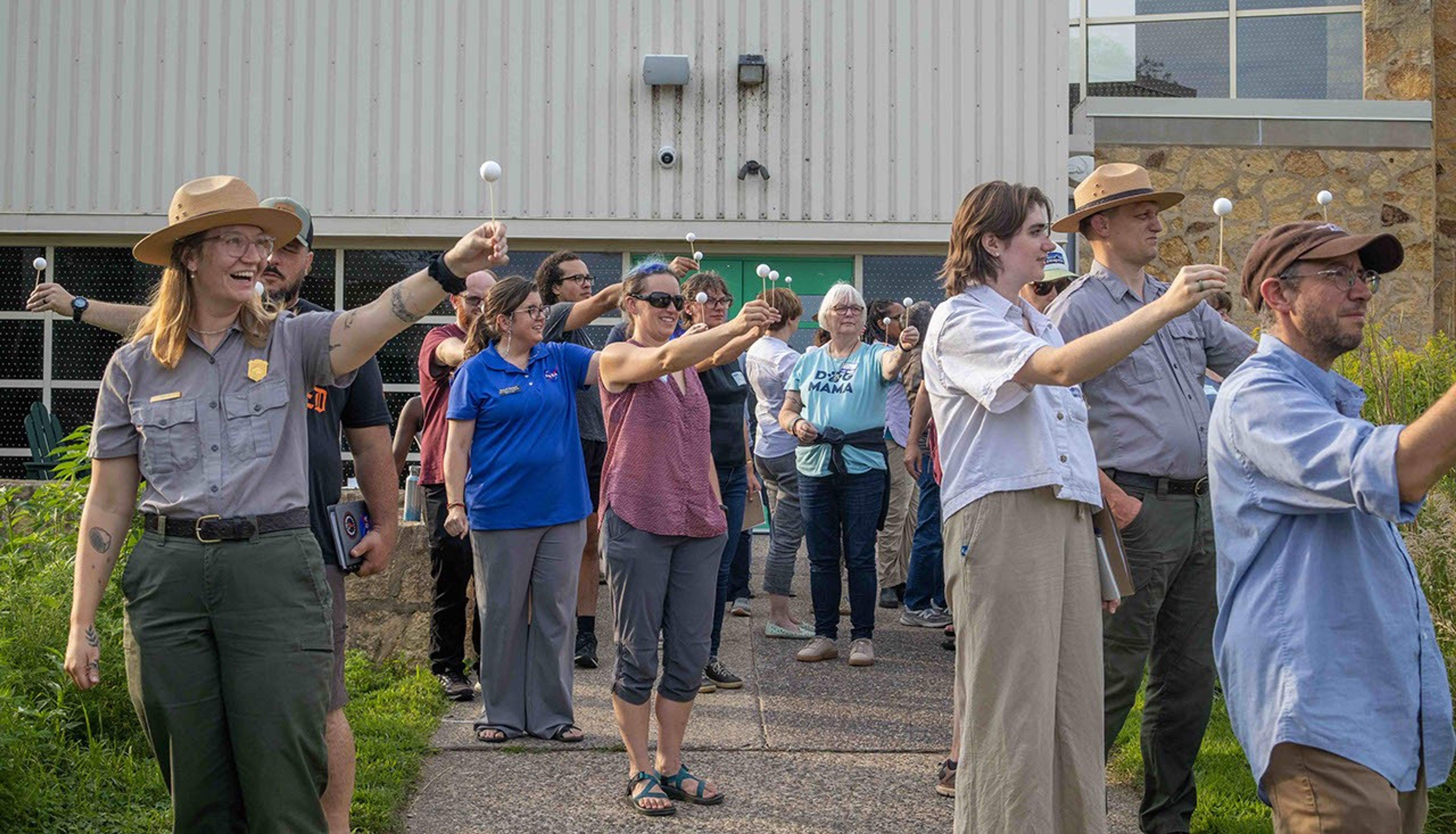Technology Development: The NASA Glenn Research Center is developing the next generation of Stirling Radioisotope Generators (SRGs) to power deep space science missions. One potential technology gap is the waste heat rejection approach for higher power Stirling convertors. The previous 140W Advanced Stirling Radioisotope Generator (ASRG) used a copper alloy conduction flange to transfer heat from the convertor to the generator housing radiator surface. The conduction flange would incur a substantial mass and thermal performance penalty for larger Stirling systems. The Radial Core Heat Spreader (RCHS) is a passive two-phase thermal management device developed to solve this issue by using water vapor instead of copper as the heat transport media.
The RCHS is a hollow, dimpled titanium disc that uses boiling and condensing water to transfer heat radially from the center where the Stirling convertor would be located, to the outer diameter where the generator housing would attach. The experimental RCHS weighs about 175 grams and is designed to transfer 130 W (thermal) from the hub to the perimeter. It operates at a nominal temperature of 90°C with a usable range between 50 and 150°C. For testing, the Stirling convertor was replaced by an electrical heating element and the generator housing was replaced with a heat absorber.
Two parabolic flight campaigns and one suborbital flight test provided essential data in multiple gravity environments to evaluate the thermal performance of the RCHS. The parabolic flights took place during 2013 and 2014. The suborbital flight took place on July 7, 2015 and included two RCHS units, one parallel and one perpendicular relative to the launch vector. The Black Brant IX rocket delivered the RCHS payload to an altitude of 332 km with over eight minutes of microgravity. The purpose of this experiment was to determine if the RCHS could function during all mission phases. Since SRGs are fueled and operating prior to launch, it is crucial that proper thermal management be maintained during 1-g ground handling, hyper-g launch, and micro-g space environments. Test results verified that the RCHS could tolerate the gravitational transients throughout the suborbital flight, while transferring the thermal power necessary to keep a Stirling convertor within its prescribed temperature limits.
Impact: The flight-tested RCHS is one-fourth the mass of the state-of-the-art ASRG copper conduction flange, and provides enhanced heat transfer to minimize thermal resistance. As the Stirling convertor’s power level increases, the mass savings and heat transport benefits provided by the RCHS will increase substantially. The sounding rocket flight test proved that the RCHS could maintain proper thermal control during hypergravity and microgravity regardless of the orientation of the device relative to the launch forces.
Status and Future Plans: The RCHS has reached a Technology Readiness Level (TRL) of six for use in Stirling power systems through rigorous testing in a wide range of environments including launch, microgravity, and thermal-vacuum. If the technology were adopted in the next generation SRG, additional integrated system testing would be required.
Sponsoring Organization: PSD’s Radioisotope Power Systems Program sponsored the RCHS development by providing funding to PI Marc Gibson at NASA Glenn Research Center. The STMD Flight Opportunities Program provided flight vehicles in partnership with the Reduced Gravity Office (RGO) from the Johnson Space Center (JSC) and NASA’s Sounding Rocket Program (NSRP) from the Goddard Space Flight Center (GSFC) and Wallops Flight Facility (WFF).



































